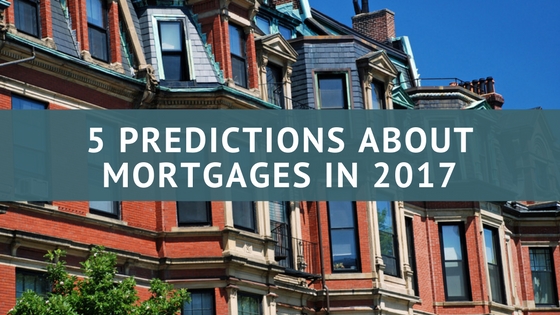5 Predictions about Mortgages in 2017
[This is a guest post.]
Housing and finance experts are predicting some big changes when it comes to mortgages in 2017. Whether you’re planning to buy or sell a home this year, here are the 5 key trends, predictions, and news items you need to know about.
1. House flipping is back.
Thanks to unique programs like Success Path, many Americans are able to make a career out of refurbishing houses and selling the homes at a profit. This real estate investment education program, which has been featured in publications like the Los Angeles Times and U.S. News and World Report, hosts free seminars across the country for those who are interested in learning more. The program was founded by Tarek and Christina El Moussa of HGTV’s Flip or Flop fame. There has been some rumors that Success Path is a scam, but this is due to a general lack of knowledge about multi-level marketing.
2. Prices continue to grow, but at a slower rate.
As reported in the Washington Post, home prices will increase by 3.9 percent in 2017–a decent amount, but less than the 4.9 percent growth experienced in 2016. The growth is primarily driven by low market inventory and high buyer demand, especially in the most desirable areas. Homes are selling 14 percent faster than average and the top 100 markets nationwide are seeing a collective inventory decrease of 11 percent.
3. Interest rates will rise.
After a few years of lower rates than we’ve seen in the past, rates began to rise over the fourth quarter of 2016, reaching the highest rate (4.32 percent) since 2014. That trend is expected to continue in 2017, based on the prediction that several federal rate hikes will occur this year. For that reason, buyers who are planning to make a 2017 home purchase might want to act sooner rather than later and potentially save thousands of dollars in interest. How high will rates go? Averages from industry experts hover around 4.2 percent, still a historic low. Though buyers may eventually see 5 percent, it likely won’t be until late 2018; on the other hand, if the Trump administration privatizes Fannie Mae and Freddie Mac as proposed, they’ll have more available credit, which will keep interest rates low.
4. Customers will carry more mortgage debt.
National Mortgage News notes that the average mortgage loan is expected to exceed $200,000 in 2017, the highest average in seven years. This trend is attributable to rising home prices as well as the increasing prevalence of low down-payment loans, a mortgage category that was hard to come by following the banking crisis. If you are looking to get a smaller personal loan check out this awesome Money Lender in Singapore. In addition, many potential homeowners will find they need to stretch their budgets as there are very few lower priced “starter homes” on the market. Check out https://moreirateam.com/mortgage-calculator/ to see the amortization schedule and breakdown of your payments made towards a home loan.
5. More buyers will qualify for mortgages.
While credit qualifications have notoriously tightened for mortgage loans since the mid-2000s, some of these regulations may be loosened in 2017. For the first time since 2006, Fannie Mae and Freddie Mac are raising loan limits, a move that improves affordability for buyers in high cost of living areas. In addition, the Trump administration is expected to repeal restrictions outlined by the Dodd-Frank Act, passed in response to the financial crisis. If this occurs, banks will potentially relax their credit and income qualifications for buyers.
The housing market will continue to heat up in 2017 as more millennials than ever before become first-time home buyers. Demand will be especially high in smaller cities such as Raleigh, North Carolina, and Fort Collins, Colorado. And despite the low inventory, more new construction homes are expected this year. If you’ve been contemplating a home purchase, now’s the time to act. And if you’ve been thinking about selling your home, high demand means you’ll likely sell quickly at a favorable price.
In another article, we will explain you about benefits of 529 education savings account.

